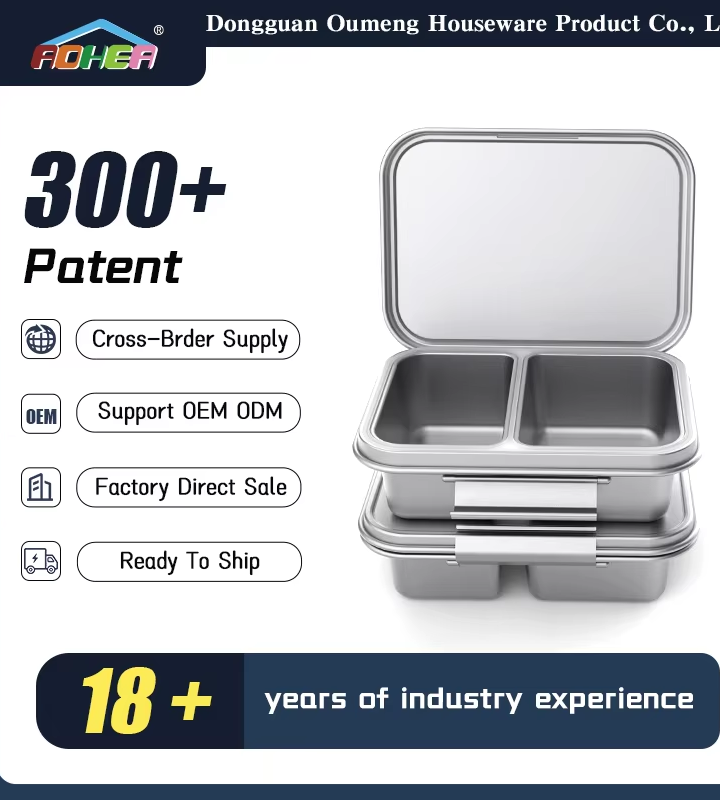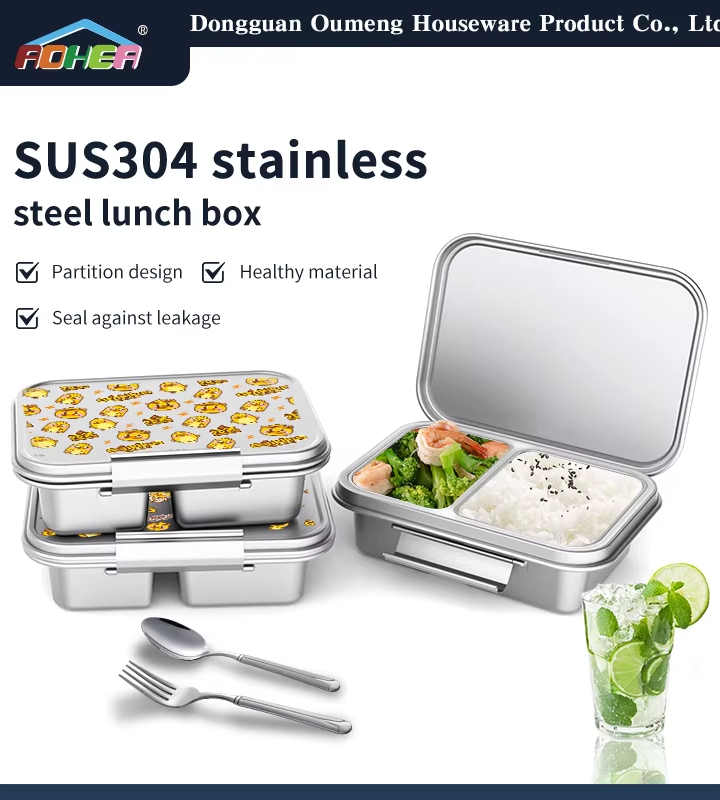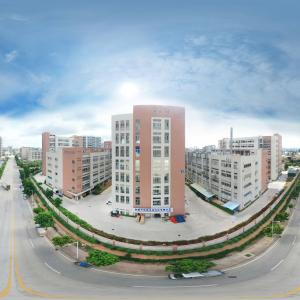A8 Yinling Science And Technology Industrial Park, Yangjiang, Guangdong, China +86 13829231860 xussllon@126.com

- Mitä?
Ruokailu ei tule koskaan näyttämään samalta, kun esittelet lapsellesi tämän kirkkaan värisen eväskotelon, joka on suunniteltu lapsille. Lisäksi, että se herättää nuorten lasten mielikuvituksen hauskoilla kuvioilla, tämä eväskotelo on myös käytännöllinen vanhemmille. Tämä eväskotelo on valmistettu kestävästä, elintarvikekelpoisesta materiaalista ja varmistaa, että ateriat pysyvät kuumina ja houkuttelevina lounaaseen asti.
Meidän lounaslaatikkomme tapauksessa siinä on useita osastoja, joten jokainen osasto voidaan täyttää tasapainoisella ruokavaliolla, joka vaihtelee voileivästä, hedelmistä välipaloihin, ja kaikki pakataan järjestelmällisesti. Kansi istuu tiiviisti ja on vuotamaton, joten sitä voi viedä kouluun, piknikille tai retkille ilman pelkoa sotkusta. Se on kevyt ja lapset voivat pitää siitä mukavasti, joten tämä lounaslaatikko on tarkoitettu kannettavaksi ilman tyylitietoisuutta.
Lisäksi lasten lounasaikatuotteet ovat saatavilla eri väreissä, muodoissa ja malleissa, jotta jokaisella lapsella olisi kiinnostusta lounasaikatoimintoihinsa. Kätevästi se on myös astianpesukoneen kestävä ja helppo ylläpitää, joten tämä lounaslaatikko sopii kiireisille perheille. Lounaslaatikkomme lapsille edistää terveellisiä ruokailutottumuksia ja samalla tekee lounasaikasta houkuttelevan sallimalla esteettömän mielikuvitusleikin.

- Mitä?
Nyt vanhempien on tärkeämpää kuin koskaan valita lapsilleen ympäristöystävällisiä lounaslaatikkoja, koska ympäristöhäiriöt ovat suuria. Niiden avulla voidaan käyttää kierrätettäviä materiaaleja, jotka auttavat vähentämään roskia ja siten säästämään. Näissä lounaslaatikkoissa on yleensä eräitä ominaisuuksia, kuten eristysosat, jotka säilyttävät sisältämien elintarvikkeiden tuoreuden ja lämpötilan. Jotkut valinnat ovat siis myös vaihtoehtoisia, joten niillä on biohajoavia ominaisuuksia. Vanhemmat, jotka ostavat ympäristöä suojaavia tuotteita, varmistavat myös, että heidän lapsensa oppivat arvostamaan ympäröivää maailmaa tarjoamalla heille houkuttelevia, käytännöllisiä ja turvallisia tuotteita.

Useimmat lapset pitävät mitä tahansa eväslaukkua tylsänä, eivätkä he epäröi kertoa vanhemmille tästä. Eväslaukun räätälöiminen minkä tahansa lapsen nimellä voi todella tehdä siitä houkuttelevamman lapsille. Näihin kansiin voidaan lisätä suunnittelua ja kokeilua tai nimikkeitä. Tämä ei vain kaunista eväslaukkua, vaan auttaa myös lapsia välttämään omien tavaroidensa katoamista koulussa. Räätälöityjen eväslaukkujen avulla lapset kehittävät omistamisen tunnetta ja tyytyväisyyttä ja jopa suojelevat tavaroitaan. Lopuksi, tyylikkäät eväslaukut eivät vain ole toimivia, vaan antavat myös lapsille mahdollisuuden näyttää persoonallisuutensa eri ruokatyyleillä.

Työllisille vanhemmille on hyödyllistä ostaa lounaslaatikko, joka ei vaadi usein ja laajaa puhdistusta. Monilla lounaslaatikkoilla on irrotettavissa olevat osat ja materiaalit, jotka ovat helppoja käsin pestä tai käyttää astianpesukoneissa, mikä vähentää puhdistukseen käytettyä vaivaa

- Mitä?
Useimmat vanhemmat ovat samaa mieltä siitä, että lasten lounaan pakkaaminen vaatii luovuutta. Älä unohda ottaa mukaan kaikkia elintarvikeryhmiä, kuten hedelmiä, vihanneksia, proteiinia ja täysjyviä. Näin varmistetaan myös, että lounaiden esillä olevat elementit ulottuvat terveellisen ravitsemuksen ulkopuolelle. Tee se eläväksi keskittymällä tiettyihin väreihin tai teemoihin, esimerkiksi tuomaan suosikkihahmot ateria-aikaan. Räpyt hedelmäkaabot tai kotitekoiset suolalaatikot ovat yksinkertaisia mutta vaikuttavia tuotteita, jotka voivat parantaa päivittäisiä lounaslaukoja ja herättää lasten makua. Jos vaihtoehtoja vaihdetaan ajoittain, tylsistystä herätetään uudelleen ja lasten odotus lounaasta lisääntyy.

AOHEA on ammatillinen Bento-laatikko ja pöytäesineiden valmistaja perustettu vuonna 2007. Tehtaalla on ISO9001, SEDEX, BSCI ja Disney FAMA-sertifikaatti.
Kun valitset lounaslaatikkoa lapsille, etsi ominaisuuksia kuten kestävyys, eristys ja helppo puhdistettavuus. Kestävä muotoilu kestää kovaa käsittelyä, kun taas eristetyt osastot pitävät ruoan oikeassa lämpötilassa. Lisäksi kevyt ja helposti avattava muotoilu kannustaa itsenäisyyteen ja mukavuuteen lapsille.
- Mitä?
Lounaslaatikko voi edistää terveellisiä ruokailutottumuksia tekemällä ravitsevien aterioiden ja välipalojen pakkaamisesta helppoa. Kun lapset näkevät monenlaisia värikkäitä hedelmiä, vihanneksia ja täysjyviä, he todennäköisemmin valitsevat terveellisempiä vaihtoehtoja. Mukautettavat osastot kannustavat myös annoskoon hallintaan ja tasapainoon heidän ruokavaliossaan.
- Mitä?
Luovia ideoita lapsen lounaslaatikon pakkaamiseen ovat hauskojen muotoisten voileipäleikkureiden käyttö, värikkäiden hedelmien ja vihannesten lisääminen sekä dippien, kuten hummuksen tai jogurtin, sisällyttäminen. Erilaisten tekstuurien, kuten rapeiden välipalojen ja pehmeiden hedelmien, sisällyttäminen voi tehdä lounastauosta jännittävän. Lisäksi harkitse teeman mukaisia lounaita lapsen suosikkihahmojen tai värien mukaan.
